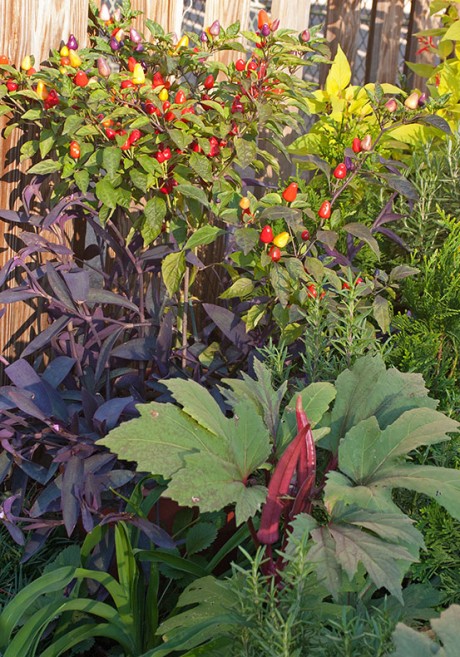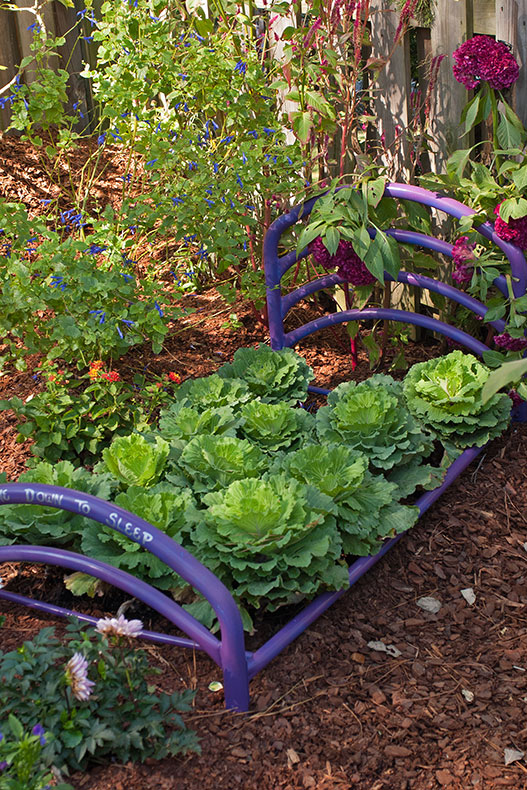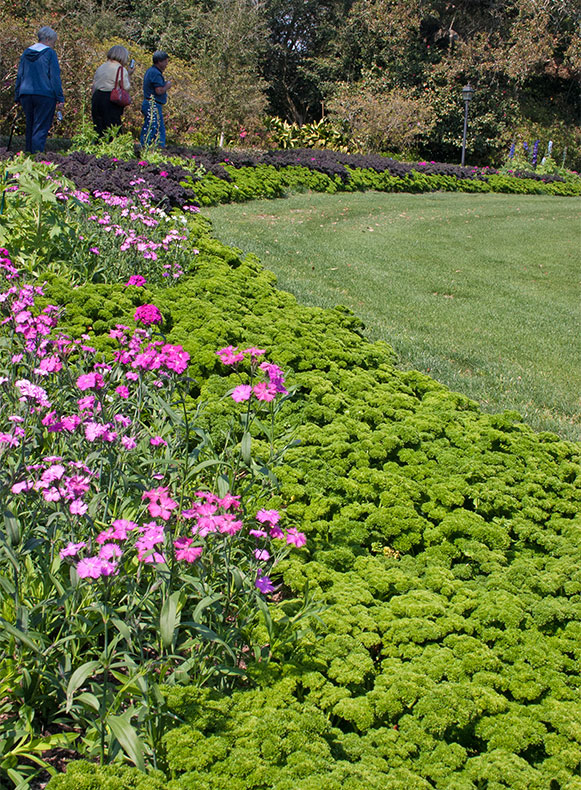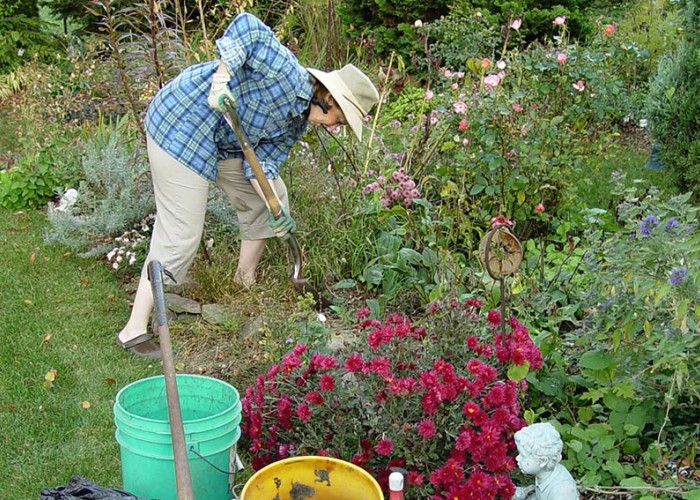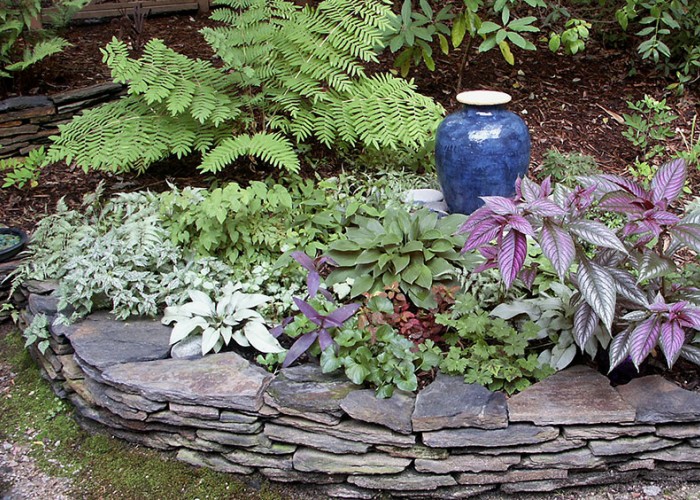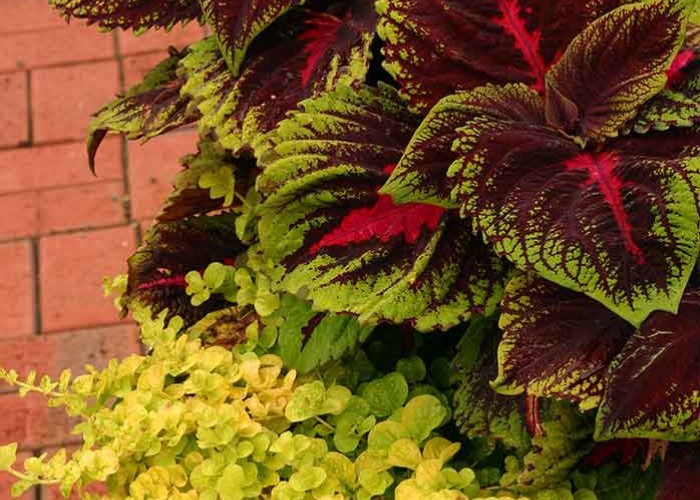Grow Veggies with Limited Space
Tips for getting a big crop from a little garden
By L.A. Jackson | Photos by L.A. JacksonSpring is in the air! So, if thoughts of producing oodles of fresh, homegrown edibles have you ready to dig in the dirt, it’s time to roll up those sleeves and start a vegetable garden!
While the physics of time and space dictate that big harvests naturally come from big gardens, for backyard growers who prefer to pass on the challenges of tending mega-plots through the long, hot summer, or who simply don’t have an abundance of planting areas, there are alternative ways to raise impressive passels of veggies —
it is simply a matter of making less do more.
Go to bed
First, for maximum production from limited growing areas, go with beds, not rows — in other words, place young plants or seeds according to their recommended spacing per plant and forget about distances between rows. Rows of plants looking like tidy lines of soldiers are better for large gardens in order to have paths to walk around, but this isn’t necessary in small beds. Accessibility is, of course, still important, so, while you can stretch ’em as long as Texas, try not to make beds over 4 feet wide — this shortens your reach into the plants and greatly minimizes embarrassing face-flops in the dirt.
Small wonders
Size isn’t everything in gardening, especially when it comes to growing backyard edibles. There are many vegetable selections — often tagged with such labels as “Bush,” “Dwarf” or “Patio,” — that are modest in height and girth, but still quite capable of producing impressive crops.
The most common big veggie that can be found in smaller sizes is the tomato. There are a ton of cultivars available, but, for starters, give “Tiny Tim,” “Bush Beefsteak” or “Early Wonder” a look. Keep in mind, however, that a majority of these slight-in-stature tomato selections are determinate, meaning they produce all the ’maters they are going to yield in a matter of weeks. Standard vine tomatoes, if kept healthy, typically crank out fruit continually over the long growing season.
Want a wider range of veggies in your small garden? Squash, watermelons, pumpkins, cucumbers, cantaloupes and green beans — all champs at chewing up space in a planting bed — can also be found in compact forms, either as young plants or seeds, at local garden shops in the spring.
Grow up
Don’t think you have to stick to Munchkin-sized plants. Typical strong growers such as tomatoes, green beans, cucumbers and squash can’t be allowed to crawl across small growing spaces, but they can be trellised, staked or caged to grow up rather than out.
Even the long, rangy vines of watermelons, pumpkins and cantaloupes can be trained upwards on vertical supports, but to avoid the dreaded drop-and-splat factor, it’s not a bad idea to cradle the developing fruits in supporting burlap, nylon or cloth slings.
Suspension weight and size problems with standard pumpkins are obvious, but there are many cultivars, including “Spookie,” “Jack O’ Lantern” and “Sugar Pie,” that yield smaller, more manageable 6- to 7-pound fruits.
Ditto for big ol’ watermelons, but with so-called “icebox” varieties like the popular “Sugar Baby” and its 8- to 10-pound melons available, it is possible to hang ’em high, too.
Growing vine crops on erect supports has other advantages besides saving space, starting with making harvesting easier. Also, vertical gardening improves fruit shape and, since beneficial air circulates through the foliage easier, can promote healthier plants.
Beyond the veggie patch
Looking for even more growing ground? Limited-space gardening with edibles doesn’t need to be confined to small vegetable plots — in other words, anywhere you have dirt in your yard is a potential planting site. And many veggies can be easily interplanted in the landscape as complements, rather than complications, to existing ornamentals.
One popular vegetable that bears the double standard of being both productive and pretty is the pepper. While blocky bell peppers might look a bit clunky in flower beds, there is a wide range of hot peppers that show off long-lasting fruits in many sizes, shapes and sizzling colors on relatively compact plants.
Like bell peppers, common pudgy eggplants probably won’t qualify as eye candy in an ornamental garden, but there are vibrantly colored fruits of cultivars such as “Fairy Tale,” “Prosperosa” and “Neon” that can also add extra visual sass to sunny flower borders.
And okra, which is closely related to the lovely hibiscus, stays true to its family ties with fancy foliage and delicate, hibiscus-like flowers. One particular standout beauty is “Red Burgundy,” an heirloom selection that has been a veggie garden favorite for many years. Its gorgeous (and tasty) scarlet pods never fail to turn heads.
Other decorative edibles with strong, distinctive profiles such as curly spinach, cabbage, looseleaf lettuce (especially red-tinted varieties like “Red Sails” and “Lolla Rossa”), kale and Swiss chard (look for “Ruby Red” or “Bright Lights”) are low-growing and, for vegetable plants, actually rather good looking. Any of these can be successfully incorporated as accent plants for perennial beds or flower gardens. In addition, root vegetables such as carrots, onions and radishes hide their crops below ground but freely flaunt flowing foliage that can be used to fill in the fronts of border plantings.
Many herbs are also great “double-duty” plants. Need examples? Rosemary’s spiky leaves and delightful (as well as edible) bluish-purple flowers make it an appealing addition to any landscape setting. Bronze fennel’s smoky look is a nice touch for container planters, while the rich, dark foliage of purple basil is a horticultural fashion statement waiting to happen.
And curly parsley, with its deep emerald leaves, is an ideal alt-ornamental to line the front of a flower bed.
One word of caution about interplanting vegetables or herbs with other plants: If you spray any pesticides on neighboring ornamentals, make sure the chemicals are cleared for safe use on edible plants as well.
About the Author
L.A. Jackson is the former editor of Carolina Gardener Magazine. If you would like to ask him a question about your garden, contact L.A. at: lajackson1@gmail.com-
More ideas for your backyard garden
-
Share this story:

